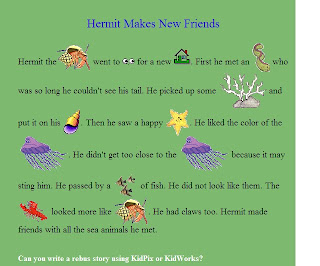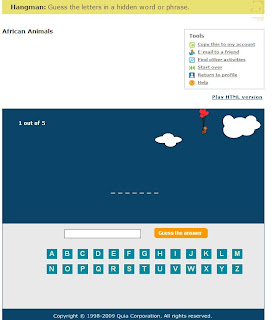I really enjoyed making the Zimmer Twins movie. The idea is so great yet so easy for students to use. This type of activity integrates ICT, Interpersonal Development, the Arts and Literacy. Students are able to use their own imaginations and be creative. Any year level can really use this program it can just be made more complex the higher the grade level. Grade 6's could be asked to complete a series of stories or different versions of the same story which they could then compare and discuss as a class the different language and forms of communication used. Lower primary classes could create more basic stories which could also be used for various purposes including literacy or the Arts.
Xtranormal.com
ABC Roller Mache
Of all the different sites we explored in this week's workshop, Roller Mache was by far my favourite. This website can be used for so many learning purposes including English, ICT, Design, Creativity & Technology and more. This site walks students step-by-step through the process of creating their own animations. It has shows students how to plan by discussing different types of storytelling, character development and showing students how to storyboard. It then walks them through the animation process including how to add sounds and how to edit. This allows students to develop literacy and ICT skills whilst they are being creative and having fun. That's really the best way to get students to learn, when they have no idea they're learning! Roller Mache is available at http://www.abc.net.au/rollercoaster/rollermache/inspire2.htm

Reasonably Clever
Reasonably Clever allows you to create leggo movies online. You can customise your leggo characters changing their hats, hair, bodies, clothes and scenery. These types of programs are great for developing thinking skills, team work skills, design skills, creativity and even literacy. You can have one group of students developing their ICT skills by creating leggo stories online while another group is using real leggo to design their own stories. Students can be asked to storyboard their stories and then those students using real leggo can film their stories with a handheld camera. Once again, a great way to get students learning while they are having fun.
Rebus Storygames

I love the idea of using images rather than words. One of the best things I experienced on placement was at a special needs school that used a program called Clicker 5. I have mentioned Clicker 5 in my earlier blogs. On one particular occasion, the teacher was using Clicker 5 to retell a story she had just read to the class. As the students were physically incapable of typing themselves, they worked together as a class with the teacher typing things up on the interactive whiteboard. She retold the story she had read in the same way that Hermit Makes New Friends has been retold above. She was also able to put sound effects in. So when she clicked the mouse, the program would read the story back with sound effects. It was fabulous.
Dvolver
I enjoyed creating this movie through Dvolver but found it quite limited. There were only a few scenarios to choose from which made the movie quite predictable. Unfortunately, once again this is not appropriate for the classroom as there is a lot of a adult content that you can't protect the students from.
Conclusion
This semester of ICT has been so valuable to me. As I wish to work in special needs, ICT is an essential skills to have. There have been so many incredible programs introduced throughout the unit that I never knew existed. During my placement I have also discovered great programs that I perhaps would not have seen the value in before taking this unit. All in all, I think I'll be using ICT in the classroom a great deal in the future. Bye for now!












